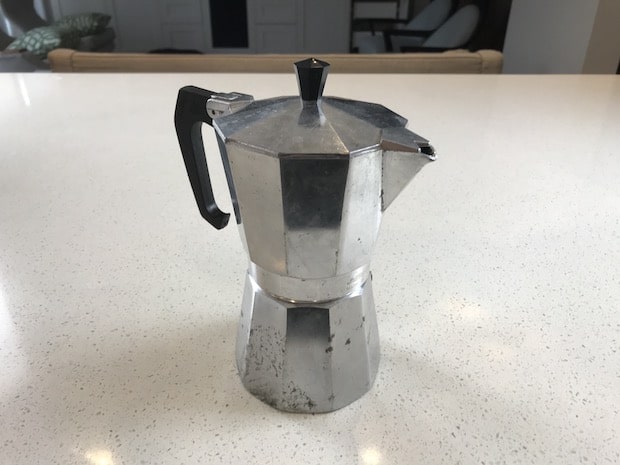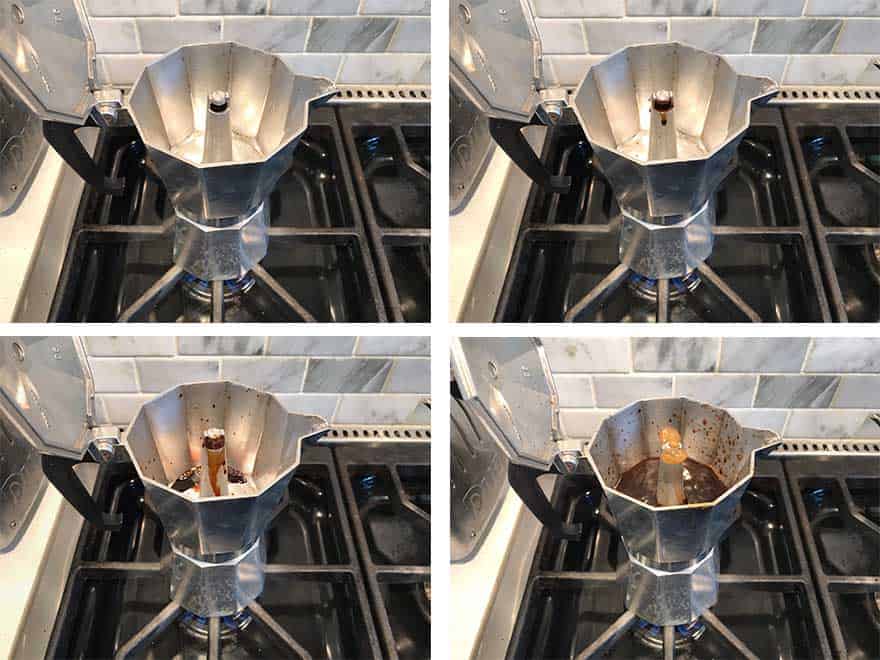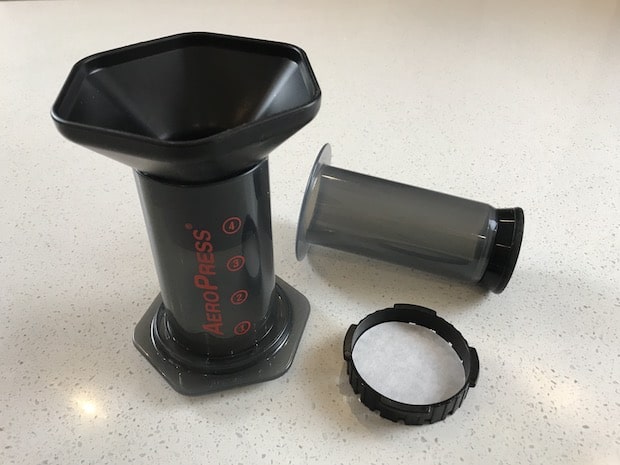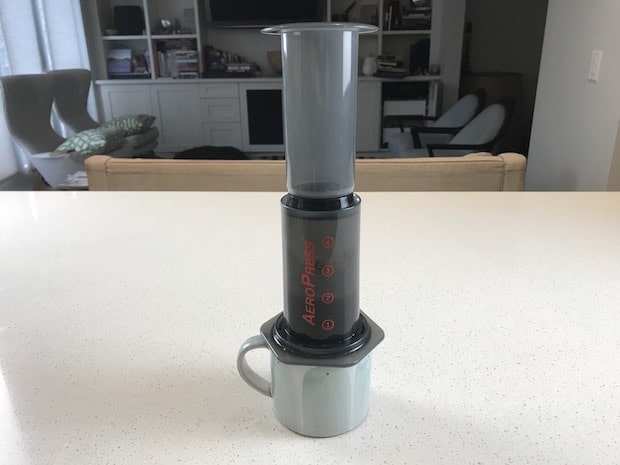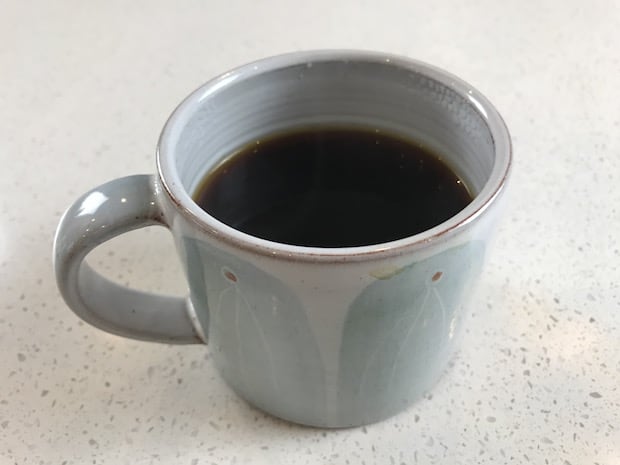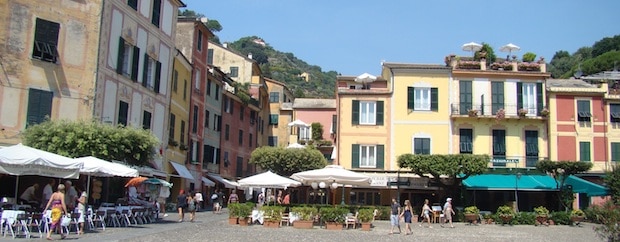Just so you know, as an Amazon Associate we earn from qualifying purchases made via bold red links, buttons or images.
Last Updated on December 26, 2023
You prefer a bold, rich morning coffee, but you’re not quite ready to invest in a home espresso machine. I’m here to present two simple and affordable home coffee brewing methods that will get pretty close to the mark.
AeroPress
Moka Pot
Neither the AeroPress nor the moka pot can make true espresso like an espresso machine does. Espresso machines use a LOT of pressure to deliver that layered goodness topped with rich crema. These other devices just can’t generate that kind of pressure.
But they can generate some. And if you know how to use it, even the small amount of pressure generated by a moka pot or AeroPress can deliver a concentrated coffee with a taste that’s almost espresso-like.
If You Can Only Choose One…
Go with the AeroPress. It’s a more versatile brewer. If you want, you master one recipe and use it forever. Or, you can keep experimenting until the end of time, brewing dozens of different ways.
The moka pot works best when you nail your recipe and then stick to it. Once you’ve done that, the moka pot can be quick, easy and consistent, but it’s not nearly as adventurous as the AeroPress.
Let’s make your choice easier by breaking down what differentiates these two brewing systems.
How They Work
Moka Pot
A moka pot heats up on the stove and utilizes steam pressure to force hot water from a lower chamber up through the filter basket that holds the coffee grounds. This extracts coffee which is then delivered via a small chimney into the device’s upper chamber.
It sounds complicated, but it’s not. We show you how to make coffee with a moka pot in another post. Here’s a quick rundown:
- Add water to the lower chamber.
- Add coffee grounds to the metal filter.
- Screw the upper brewing chamber onto the lower boiling chamber, with the filter nestled in between.
- Place on stovetop at low to medium heat.
- Wait approximately five minutes, keeping a close eye on it.
- When the upper chamber fills, pull off heat and pour.
AeroPress
The AeroPress method uses the downward pressure of the plunger to deliver a rich, yet bright and clean coffee.
The brewing process goes something like this:
- Place a filter into the filter cap and attach it to the brewing chamber.
- Add ground coffee.
- Place atop your mug.
- Add boiling water to the chamber (you may want to rest the plunger in the chamber to seal in the heat of your brew).
- Wait approximately two minutes.
- Gently plunge coffee into your mug.
In addition to the traditional AeroPress brewing method, coffee aficionados have invented the AeroPress inverted method, where you flip the device upside down and allow the grounds to steep much as they would in a French press.
Taste
Most of us would argue this is the most important consideration. And it really is a matter of personal preference.
The AeroPress typically uses a paper filter, which produces a cleaner cup free of sediment. If you like that extra bit of body in your coffee, you can also try the AeroPress with a metal filter that will let a little more through.
You can play around with the grind, the coffee-to-water ratio, and the brew time to get the kind of coffee you want. If you’re a coffee geek like I am, you’ll delight in experimenting to get that perfect brew.
Moka pots offer up a rich and slightly oilier cup of coffee. It’s strong coffee, and many find it to be close to an espresso. If you prefer that darker, richer taste and don’t mind a bit more texture to your coffee, the moka pot might be for you.
Ease of Brewing
Neither of these brewers is particularly difficult to master.
The AeroPress is famously forgiving—even though you can brew so many different ways with it, it’s really hard to get a bad cup. I like that.
Moka pots are really easy once you get your recipe down, but they go directly on your heat source and boil water in real time. If you take your attention away from your stovetop for a few moments, they can boil over or burn.
I recommend using low to medium heat, and keeping a close watch when brewing with a moka pot.
Capacity
An AeroPress brews one cup at a time, and the only way to change that is by buying their XL model.
Due to the ease and speed of the brewing process, however, it’s fairly reasonable to brew several cups in a row, and you can keep the coffee in a thermos or other carafe if needed.
Moka pots come in a range of sizes from one cup all the way up to a 12-cup option. Depending on your needs, you can find the size that’s right for you. At such an affordable price point, you might consider a smaller size for everyday use and a larger one tucked away for when you entertain.
Durability
An AeroPress is pretty much indestructible and won’t show signs of age until it’s been used excessively over a very long period of time.
Moka pots vary in quality. All of them are pretty hard to break, but loosening of the plastic handles is the most common problem. Cheaper aluminum models are known to corrode and pit over time, which can affect the flavor of your coffee and make them more difficult to clean properly.
A higher quality stainless steel moka pot should last a very long time without issue.
Ease of Cleaning
AeroPress takes the prize on this one. It’s the easiest brewer to clean. Just pop out the spent coffee disk and give the chamber and plunger a quick rinse.
Although a moka pot isn’t difficult to clean, there are a few more components. They get very hot while brewing so you have to wait or cool them before clearning. You also have to dig the coffee grounds out of the metal filter chamber.
As noted above, as your moka pot starts to degrade overtime it may become more difficult to clean because the surfaces become uneven.
Versatility
An AeroPress is more versatile. You can brew with it many ways. Results may vary greatly as you perfect your method.
A moka pot brews only one style: strong, rich, and a bit oily.
Portability
The AeroPress is one of the most portable brewing methods around and has become a favorite for the traveling connoisseur. It’s sturdy, slender design makes it easy to add to your carry-on or backpack without much extra weight.
Some travel coffee grinders are even small enough to slide right into the AeroPress chamber, creating the ultimate travel brewing setup.
Moka pots are fairly sturdy and you could pack one of the smaller ones to take camping or on a road trip, but it will be a bit awkward and add a bit of weight. The handle sticks out a bit as well.
What the AeroPress and Moka Pot have in Common
Innovation
The moka pot and AeroPress were invented half a century apart: the moka pot by Italy’s Alfonso Bialetti in 1933 and the AeroPress by American Alan Adler in 2005. Both these men were innovators who saw an opportunity in the market, but above that, they themselves longed for an elevated and refined flavor.
Low Cost
Both coffee makers can run you less than $40, quite accessible as far as coffee makers are concerned.
Moka pots have several makers, and they range in quality and size. You can spend a bit more if you want to get fancy.
The AeroPress is made by only one company and for a long time there was only one kind of AeroPress. But they have branched out in recent years since Adler sold the company. They now market a version made of clear plastic, and a larger version that is meant to brew two cups of coffee. So prices for these are starting to vary.
Ideal Grind Size
Both methods require a similar grind size, which is leaning toward a fine espresso-style grind. There is much more room to play with the AeroPress. You might want to adjust your grind size to experiment, but for the basic brewing method you’ll still want something fairly fine.
Brew Time
The brew time for both methods is quite fast, and depending on how fussy you want to get with each one, they can range from a couple of minutes to about five or so. Overall, both are pretty speedy.
While I do prefer the AeroPress, I will admit that the moka pot has a quintessential Italian vibe and is easy to imagine perking away on the stovetop of some family on the outskirts of Rome. If you’re a traditionalist who tends to romanticize Italy, it’s a great choice!
But if you’re always looking to refine and perfect your brew, you’ll probably love to experiment with the versatile AeroPress—particularly if you’re going to take your elevated brewing setup on the road.


